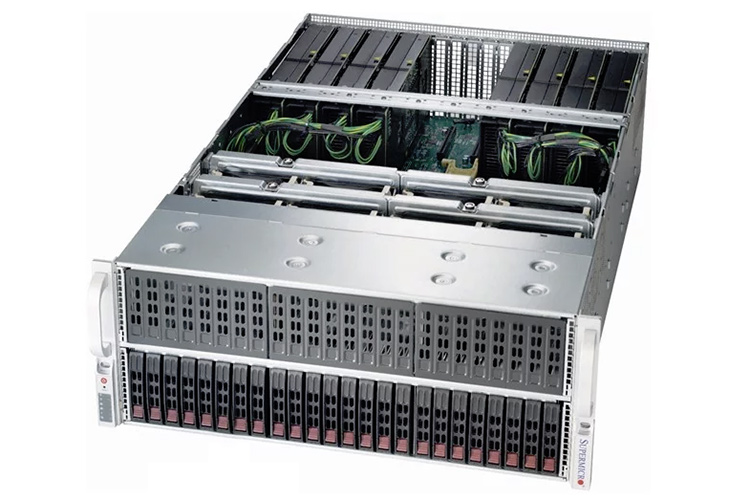Research IT
GPU Test-bed for Research
Besides being used for rendering complicated graphics and video contents, the graphics processing unit (GPU) has long been deployed to parallelize the execution of various computer applications, including scientific applications. These applications are sometimes called the GPU-accelerated applications. Acceleration can be significant when the computation can be broken down into multiple parts, each processing an independent portion of the data set. As one may figure, the actual amount of speed-up can depend a lot on the type of GPU deployed and more importantly on how the application can be modified to take advantage of the GPU.
With the rapid advances in GPU and related software technologies, more and more researchers are attracted to the potentials of using GPUs in their scientific applications. However, besides the more popular software that are already GPU-accelerated, much remains to be done by the researchers, in terms of testing and adapting their codes, if the benefits of the GPU is to be fully unleashed. This effort can be non-trivial in most cases and we feel a pressing need to assist researchers in HKUST to accomplish this as much as possible.
Earlier this year, with generous support from the Vice-President for Research and Development and the Research Office, ITSC has set up a GPU test-bed in campus with 2 latest generations of GPU servers, after organizing a series of on-campus GPU training courses in July. This test-bed is intended for researchers to test run and benchmark their computational applications for future resources and budget planning.
The configurations of the 2 servers are:

Server 1: Dual Xeon w/14 cores CPU, 256GB RAM, 4*Nvidia GTX-1080Ti GPU card, 4TB SSD / 8TB HDD

Server 2: Dual Xeon w/14 cores CPU, 256GB RAM, 2*Nvidia Tesla V100 GPU card, 4TB SSD / 8TB HDD
The GPU test-bed is now ready to use and a few of researchers has started to test-run and benchmark their applications and compare the result with traditional CPU or previous generation of GPU computation.
For those who are interested to use the test-bed for their application performance and benchmark, please do not hesititate to contact us at cchelp@ust.hk and we will arrange with your team for the schedule, accounts and software setup.
Hong Kong Open Exchange (HKOX)
In the past few years, ITSC has been collaborating with our counterparts in the Joint Universities Computer Centre (JUCC) on an initiative called Hong Kong Open eXchange (HKOX). This effort is a response to the global vision of connecting the Research and Education (R&E) networks worldwide using a set of strategically located Global eXchange Points (GXPs).
JUCC is the coalition of the central IT organizations in the higher education institutions in Hong Kong, and oversees the development of HARNET (Hong Kong Academic & Research Network), the local R&E network. The rapid growth in cross border R&D activities, combined with a global consensus about the strategic location of Hong Kong as a GXP, has prompted our collaboration on HKOX.
We are pleased to report that our collective effort has come to fruition earlier this year. HKOX has been established in April 2018 as an open exchange hub in the Asia Pacific region, together with Singapore and Tokyo. HKOX is located at the iAdvantage data center at Chai Wan, with bountiful submarine cable connectivity such that connection links from overseas R&E networks can be easily arranged. HKOX supports connection speeds at 10Gbps, 40Gbps, and 100Gbps.
As illustrated in the diagram below, the eight local tertiary institutions including HKUST are connected to HKOX via HARNET, and the establishment of peering connections between HKOX and the following R&E networks are under way:
- CERNET – China Education and Research Network
- CSTNET – China Science and Technology Network
- KREONET – Korea Research Environment Open Network
- JGN – Japan Gigabit Network (of NICT)
- SingAREN – Singapore Advanced Research and Education Network
- TEIN – Trans-Eurasia Information Network
- Internet2 via TransPAC – Trans-Pacific Network (US)

We are excited by the opportunities that HKOX will bring to the R&E community of HKUST, especially in the era of big data and global collaboration. Essentially this facility will enable us to collaborate with our overseas partners on R&E activities that require high network bandwidth or low network delay. We have learned some use cases already and would be happy to discuss with you in case you have some applications in mind. Please feel free to contact Justin Kwok at ccyung@ust.hk.
